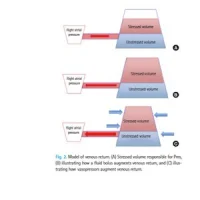Simple measures introduced at ward level reduced deaths from sepsis by nearly half, in a study at Levanger Hospital in Nord-Trøndelag, Norway.
The research project was carried out by Nord University, Levanger Hospital, the Mid-Norway Centre for Sepsis Research at NTNU and St. Olavs Hospital in Trondheim, Norway, and is published in Critical Care.
Erik Solligård, the senior author of the study and head of the Mid-Norway Centre for Sepsis Research, emphasised the key role of ward nurses in increasing the survival for patients with serious infection. “The use of cost-effective and clear tools for the identification of sepsis and the scoring of severity in patients as well as a standardised treatment course can achieve this. Hospitals should have a standardised observation regime so sepsis can be diagnosed early in its progression, and should create clear treatment plans for addressing sepsis.”, he said in a media release.
The study investigated whether implementation of a clinical tool for triage of SIRS and organ failure at the ward, an alert and treatment flow chart could improve clinical observations, lead to fewer patients developing severe sepsis, and thus improve patient survival. Doctors received written information, and nurses and nursing students received a 4-hour training course. The treatment course was standardised using clear guidelines for doctors and nurses.
See Also: Study: Modelling At-Risk Sepsis Patients in the ED
In the study the number of patients who died from sepsis by 40% (from 12.5% to 7.1%). In addition, the measures reduced the development of serious sepsis during hospital stays by 30% and the length of stay in intensive care was reduced by an average of 3.7 days per patient.
The researchers note that many patients in the study, who were prevented from developing severe sepsis, would not have been recognised by the q-SOFA criteria. They suggest that the Systemic inflammatory response syndrome and Organ Failure (SOF)-Triage may be a complementary tool for observing inpatients who are admitted with, or develop an infection during the hospitalisation.
Source: Norwegian University of Science and Technology
Image credit: Pixabay
References:
Torsvik M, Gustad LT, Mehl A, Bangstad IL, Vinje LJ, Damås JK, Solligård E (2016) Early identification of sepsis in hospital inpatients by ward nurses increases 30-day survival. Crit Care, 20(1): 244.
Latest Articles
sepsis, early recognition, Norway
Simple measures introduced at ward level reduced deaths from sepsis by nearly half, in a study at Levanger Hospital in Nord-Trøndelag, Norway. The research project was carried out by Nord University, Levanger Hospital, the Mid-Norway Centre for Sepsis Re










